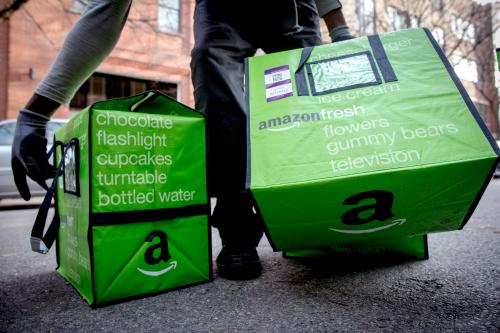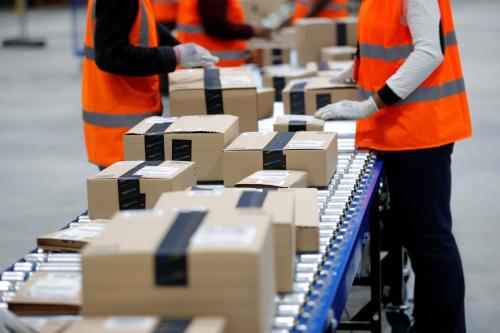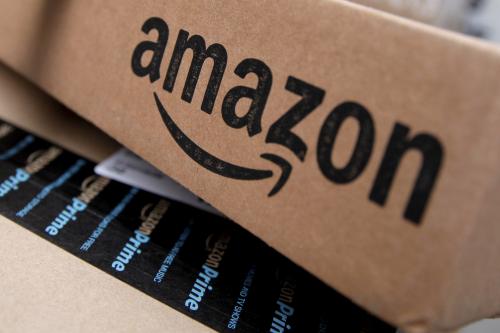This post was published on September 18, 2017 in CityLab
The specters of white worker angst and racial disparities that took center stage during the 2016 presidential election created conditions for a corporate hero to swoop in and make America great again.
Enter Amazon CEO Jeff Bezos stage left.
The tech mogul and newspaper owner has big-city mayors outstretching their arms for the possibility of accommodating and hosting Amazon’s “H2Q” headquarters. The company’s request for proposal (RFP) pronounced that HQ2 will hire 50,000 people for an industry that is positioned to propel cities towards the “next economy,” according to research by the Brookings Institution. The average annual salaries of HQ2 employees will exceed $100,000. Amazon expects to outlay $5 billion in capital expenditures, an amount that could build a small Gotham.
By all means, provide the jobs to cities that need them. It’s not just Trumpian to want American companies to create jobs in the U.S. and invest in the country’s workers. But if governments courting Amazon really have the best interests of their residents at heart, they must require more of the company than a list of Amazon’s wants and some job openings. If cities are going to sell the farm, then the proceeds better benefit the entire community, especially those who can easily be left behind.
Cities don’t just need jobs–and even high paying positions are insufficient. They also need to eradicate racial and gender disparities, provide work training programs, and they need to better prepare for the inevitable natural and manmade disasters that threaten citywide prosperity. Cities deserve a progressive company – one that accounts for societal gains alongside typical financial profits.
In a browning America, Amazon won’t miraculously create a more diverse workforce. Among current U.S. managers at Amazon, 66 percent are white, 21 percent are Asian, 5 percent are Hispanic, and 5 percent are black, according to 2016 self-reported data. Amazon’s entire U.S. workforce better reflects the country’s population, with employees that are 48 percent white, 21 percent black, 13 percent Asian, and 13 percent Hispanic. However, black people make up less than 5 percent of the pale male tech industry in general, so meeting the needs of diverse cities isn’t a given with the arrival of Amazon. Consequently, mayors should lay out conditions or rules of engagement that address the needs of their diverse residents.
Cities can also demand Amazon’s presence to generate resources for workforce training and disaster preparedness. A new Brookings report on Pittsburgh found unaddressed workforce development significantly threaten economic growth and competitiveness. In addition, The impacts of hurricanes Harvey and Irma show us that we can’t keep relying on federal bailouts for inevitable disasters. Whether it be forces of nature or manmade economic, social or political, storms will come. Corporations must contribute a fair share to the community chest.
Cities deserve a progressive company – one that accounts for societal gains alongside typical financial profits.
But trading jobs for deep tax breaks that vying cities are asked to accept will come at the expense of needed resources. Amazon would have to deviate from its current framework of getting tax incentives from states and municipalities to meet cities’ progressive agenda. The economic development policy group Good Jobs First, which has followed Amazon’s moves preceding the announcement, found that “Amazon has continued to receive subsidies valued at least $115 million (not including four deals of undisclosed value), for a long-term total exceeding $1 billion.”
Not everyone is ready to work at Amazon, but shouldn’t those residents be given an opportunity to get ready? A progressive company is also one that’s willing to invest in communities not yet ready to work. In the Brookings Institution report Meet the Out of Work, authors Martha Ross and Natalie Holmes tease out the specific employment needs in the largest cities in the country. Even though the United States is defined as in a state of full employment because we theoretically have more jobs in the U.S. than people to fill them, specific populations are chronically out of work. Some cities with higher concentrations of undereducated people need bridge programs, which offer academic preparation before receiving job training. Other cities really need Amazon to include apprenticeships and transitional jobs programs to all future workers.
The carrot Bezos uses for social change lies in one of his preferences in his RFP for “cultural community fit,” which includes support of a diverse population and elected officials eager and willing to work with the company. Given the rest of the criteria listed in the proposal, there are realistically only about two dozen cities that stand a chance – even though places like Ferguson, Baltimore or Detroit really make a strong case if Amazon considered the historical disenfranchisement of industries that were also once forward facing but ultimately turned their backs on black people.
Historic disenfranchisement by employers, criminal justice systems and housing policy should not preclude cities from entering the competition for Amazon. In fact, that should be a reason for entering a space. HQ2 could bring a small piece of justice to majority black cities.
The way many cities have tried to achieve racial equity is through non-profit work and philanthropy. Clearly that hasn’t been enough. Cities need companies to want to be a part of progressive change, something Bezos has expressed a desire to do. In 2010, Bezos was quoted in a Reuters’ article telling Charlie Rose, “In many cases, for-profit models improve the world more than philanthropy models, if they can be made to work.” Let’s hope the competition makes Amazon more progressive than it already is.






Commentary
High paying jobs alone won’t save big cities
September 19, 2017